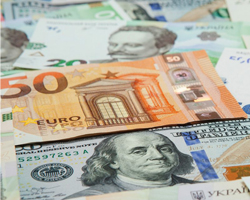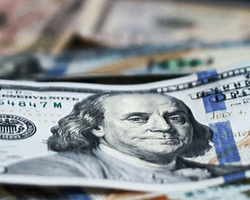Global Pressure Adds to Investor Anxiety | Daily Market Analysis

Key events:
United States - Trade Balance (Jul)
UK - BoE Gov Bailey Speaks
Canada - BoC Interest Rate Decision
Canada - Ivey PMI (Aug)
Japan - GDP (QoQ) (Q2)
Australia - Trade Balance (Jul)
The U.S. stock market has declined despite strong economic data showing a quite robust labor market, while global pressures are exacerbating investor dissatisfaction.
After a summer rally, the U.S. Federal Reserve pledged to sharply raise interest rates to combat inflation in the country, which remains near its highest in 40 years, while the conflict in Europe and quarantine over COVID-19 in China complicate attempts to predict the future of the economy.

The chart above shows the change in the number of people employed, excluding the farming industry
Last Friday's labor market report showed weakening wage pressures and generally strong U.S. employment. In particular, monthly wage growth slowed in August, a positive sign as investors and policymakers alike expect inflation to decline. Employers created 315,000 jobs, indicating that the economy is staying afloat and largely in line with economists' forecasts. The increase in job openings is another indicator of the firmness of the labor market, where demand for workers exceeds the number of unemployed job seekers.
Some economists point out that in the current period even good news is sometimes poorly perceived by the market, and therefore the "bearish" mood can start again at any minute.
According to some analysts, there are a lot of negative factors in the world today which can affect the market in the next few quarters.
Investors are focused on the Fed's fight against inflation, while meanwhile, the stock market is down after strong economic data showed that the central bank may have to raise interest rates more harshly. However, keep in mind that it takes time to tighten monetary policy, so many are prepared for economic data to show weakness at some point in time, which goes hand in hand with a recession.
After Fed Chairman Jerome Powell reiterated the central bank's stance on continuing to fight inflation, traders took a cautious tone.
Utilities, consumer staples, and health care stocks, which tend to hold steady when economic growth wanes, perform best during this period.
Technology stocks, which trade at very high valuations, making them particularly sensitive to rate hikes, are the worst-performing segment of the S&P 500 during the same period. For example, shares of Salesforce (NYSE: CRM) Inc. and Qualcomm Inc. have fallen 12% since Aug. 25.

The EUR/USD chart shows yesterday`s drop in currency pair price
At the same time, the European currency continues to weaken against the U.S. dollar. The euro hit another 20-year low as the EUR/USD fell to 0.9884, its lowest level since December 2002. The suspension of gas supplies via Nord Stream-1 for an indefinite period is another reason for the weakening, with the reasons being the same: the ECB lagging behind the Fed in fighting inflation and the rising cost of imported energy, which worsens the balance of payments.
This is the moment when any news is perceived negatively by the market: good growth data tells us that inflation remains high, which is likely to be negative, and if inflation declines because demand is shrinking fast and the economy is heading into recession, that's not good news either.









